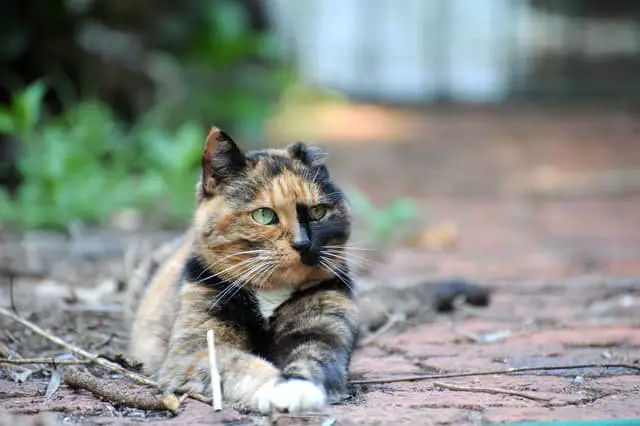
Not sure how to look after a blind cat? Here are all the most useful tips and what to absolutely avoid in order not to put his health at risk.
Sad, but it could happen, especially with advancing age, that a cat begins to suffer from vision problems. There are many eye diseases that could be affected: cataracts, glaucoma and even trauma that can cause serious eye discomfort. In the worst cases the cat could go blind: so what is the best way to take care of him? It is reasonable to think that, compared to a healthy cat, he needs us and our help more. But how can we guarantee him a certain serenity and make him live in peace? All the most useful tips for managing such a situation.
Blindness in cats: possible causes
A cat may lose their sight for various reasons and the event can be sudden, therefore traumatic, but in most cases it is a long and painful process. The pain is not only of the cat, but also of the owner who helplessly witnesses a slow but inexorable worsening of his condition. The slowness of this process can cause the owner to notice it when the symptoms are evident and the conditions too serious.
At the base of the vision problem there could also be neurological causes, cataracts in cats, but also ocular tumors, inflammation and lesions or increased intraocular pressure. Thanks to their developed sense of smell and touch, cats are often able to ‘compensate’ for the loss of vision.
Blind cat: how to notice?
Certainly it is not so obvious even for the most attentive of owners to realize that his poor cat no longer sees well: this is because cats often adapt easily to the environments they already know even though they no longer have sight. What is the secret to knowing if a cat has vision problems? Observe him carefully: a cat that does not see well usually has difficulty walking, although he knows the places well. Even when the cat is suffering from cataracts it can appear uncertain and can move with uncertainty, and this situation makes it sad and nervous. Furthermore, a blind or semi-blind cat could be terribly frightened by any noise as he cannot see where it comes from.
The poor walking of a visually impaired cat can be accompanied by a number of other factors, such as inflammation of the eyes, changes in pigmentation, dull and large pupils, which do not close when exposed to light. His movements will also be more clumsy: you may happen to see him bump into a piece of furniture.
General, the cat will seem to have difficulty finding his way around, he will not jump with the same confidence as in the past from one floor to another, maybe he will not even want to venture outside as he did before and may squint often.
Only a visit to the vet can dispel all our doubts: in fact, all is not lost and some vision disorders can be treated and cured at least to stop them from worsening.
Blind cat: how to take care of him

The real secret is to try not to make the cat weigh on its sad condition. How? Taking advantage of his other senses that still work well, primarily hearing. It will be very sensitive, so let’s avoid scaring it with sudden and violent noises. We must try to establish a new channel of communication with him, which does not involve gestures of course but calls. So let’s call him often to let us know where we are.
Better to keep it safe indoors, without letting it go outside with all the dangers of the road and the pitfalls of the garden. If we want to satisfy the cat’s need to go out in the fresh air then we can take it on a leash ourselves.
We do not move the furniture inside the house, just so as not to confuse the poor cat. He has a good memory of remembering places and often associates them with smells. If we move the furniture, we could also get injured when switching between furniture.
If there are children in the house, we try not to let them disturb them or leave their toys on the ground. The order is very important to prevent the cat from tripping over some object that he does not see.
Let’s get him a collar that has all the necessary information on it, to ensure that the cat does not get lost or that it is always returned to its rightful owner. Also on the plate it must be specified that the cat has vision problems or is blind. Furthermore, it is always better to have him install a microchip to always have his movements under control.
Let’s pamper him a lot and give him more attention than before: every good moment must be spent with him, who needs it so much.
A blind cat proof home
- In addition to not moving any furniture inside the house, it will be necessary not to change its fundamental reference points such as water and food. The bowls will not have to be moved, otherwise it may not find them anymore.
- Get him used to the litter box again: we will have to wait for the cat to find the way back to his niche from the kennel and vice versa. If the house has several floors it will be better to put a few more litter boxes, perhaps one per floor.
- We put bars on the windows to prevent the cat from falling outside, from a window or balcony. The toilet seat must also always be lowered to prevent it from falling into it.






